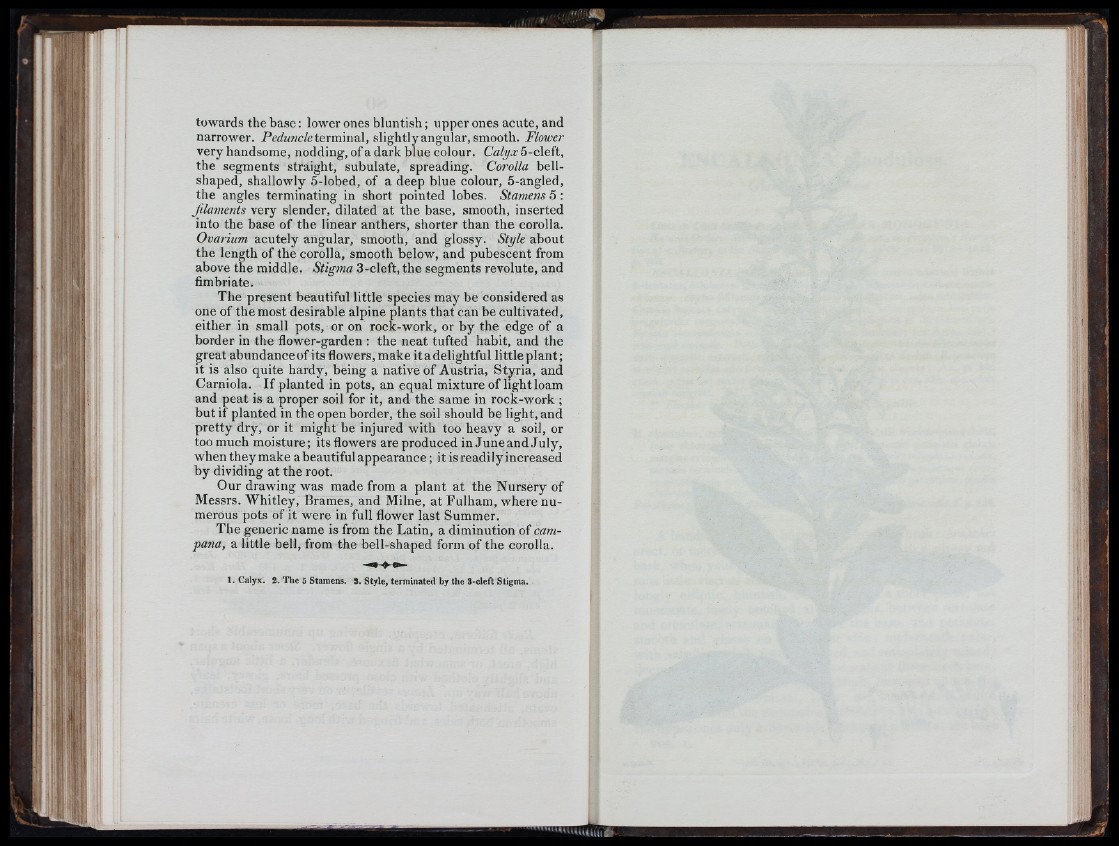
towards the base: lower ones bluntish; upper ones acute, and
narrower. Peduticle iexmma\, slightly angular, smooth. Flower
very handsome, nodding, of a dark blue colour. Ca/j/.r 5-cleft,
the segments straight, subulate, spreading. Corolla bellshaped,
shallowly 5-lobed, of a deep blue colour, 5-angled,
the angles terminating in short pointed lobes. Stamens 5 :
Jilaments very slender, dilated at the base, smooth, inserted
into the base of the linear anthers, shorter than the corolla.
Ovarium acutely angular, smooth, and glossy. Style about
the length of the corolla, smooth below, and pubescent from
above the middle. Stigma 3-cleft, the segments revolute, and
fimbriate.
The present beautiful little species may be considered as
one of the most desirable alpine plants that can be cultivated,
either in small pots, or on rock-work, or by the edge of a
border in the flower-garden: the neat tufted habit, and the
great abundance of its flowers, make it a delightful little plant;
it is also quite hardy, being a native of Austria, Styria, and
Carniola. I f planted in pots, an equal mixture of light loam
and peat is a proper soil for it, and the same in rock-work ;
but if planted in the open border, the soil should be light, and
pretty dry, or it might be injured with too heavy a soil, or
too much moisture; its flowers are produced in Juneand July,
when they make a beautiful appearance; it is readily increased
by dividing at the root.
Our drawing was made from a plant at the Nursery of
Messrs. Whitley, Brames, and Milne, at Fulham, where numerous
pots of it were in full flower last Summer.
The generic name is from the Latin, a diminution of cam-
pana, a little bell, from the bell-shaped form of the corolla.
1. Calyx. 2. The 5 Stamens. 3. Style, terminated by the 3-cleft Stigma.